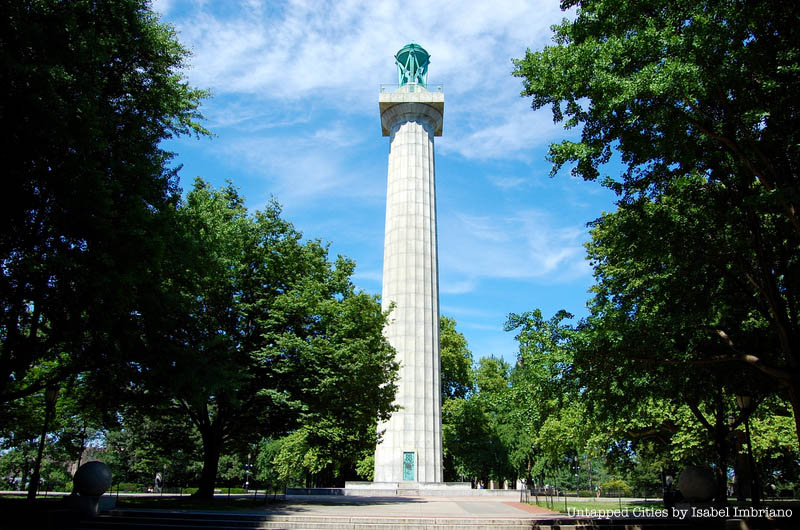3. Fort Greene Park

The Fort Greene Park we know today was built on the land of the former Fort Putnam, named for George Washington’s Chief of Engineers Rufus Putnam, which was later renamed for Nathanael Greene in 1812. Frederick Law Olmsted and Calvert Vaux redesigned the park in 1867, around when the first section of Prospect Park opened to the public. At the top of the central hill was a walkway that approached two flights of steps leading to a circular parade ground. The rest of the hilly site was designed to have quaint walkways looking over grassy spaces.
Additionally, Olmsted and Vaux collaborated on a vault for the Prison Ship Martyrs’ Monument, commemorating the more than 11,500 American prisoners of war who died in captivity while on British prison ships during the Revolutionary War. Prisoners were kept aboard the HMS Jersey, Falmouth, Hope, and other ships, some of which were maintained in New York Harbor. Unfortunately, many bodies were thrown overboard, and during the construction of the Brooklyn Navy Yard, many of these remains were uncovered and put into boxes and casks. A small number of remains were interred in a crypt beneath the base of the monument. Olmsted and Vaux were originally tasked with designing the entire monument, including the crypt, but the final design was put forward by Stanford White. The monument stands 149 feet high and consists of a granite Doric column.





